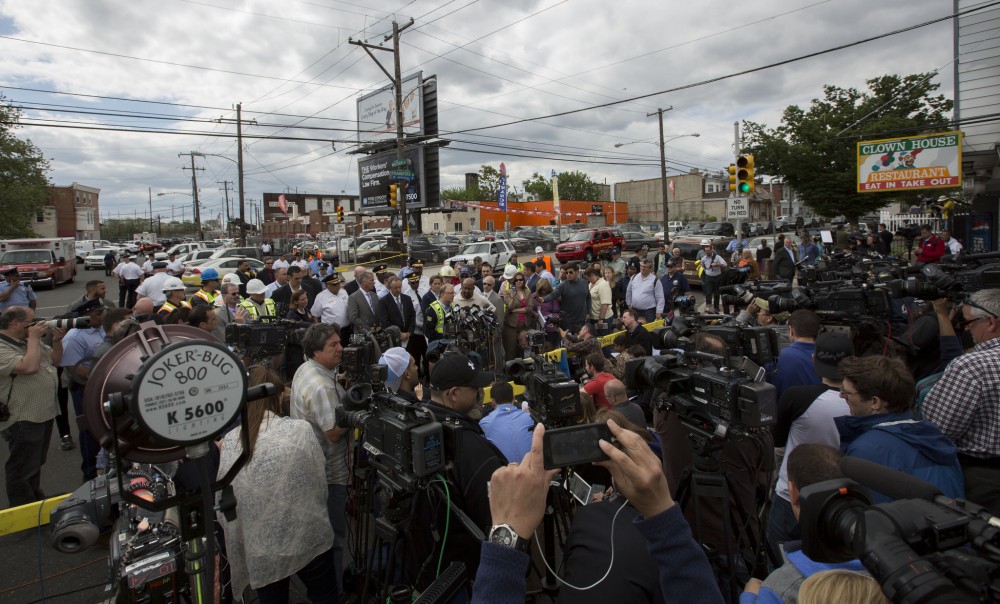
Train Wrecks, Crisis Communications: Then and Now
Nearly 20 years ago on a snowy February Friday night, I was leaving my office as a Montgomery County, Md. public information officer, when the phone rang and a TV reporter who I often dealt with called and asked what we knew so far about this “train collision” in Silver Spring.
I thought he was messing with me after a full day in which I had been doing relatively routine, snow-related press interviews. But, unfortunately, he was not joking. The sad reality was that a Maryland commuter train (MARC train) had actually collided with an Amtrak train. Eventually, but not before many long hours, when the dust finally settled, we would learn that 11 people were tragically killed on the MARC train and dozens aboard both trains were injured.
(The National Transportation Safety Board report: http://www.ntsb.gov/investigations/AccidentReports/Pages/RAR9702.aspx)
When the reporter first called, I knew absolutely nothing. But from that second on, suffice it to say that we who handled media relations and emergency communications in our county – and especially our valiant first-responders and government leaders who handled the public safety crisis itself – spent the next few days dealing with one of the worst disasters imaginable.
This week’s tragic derailment of a Washington to New York-bound Amtrak train in the Philadelphia area sparked an immediate flashback to that surreal weekend, which rocked our little world and turned us into “ground zero” for worldwide media coverage, back in early 1996. It also got me thinking about how much has changed in regard to communications and crisis communications, in particular, since that time.
THEN: Cell phones were still not something everyone carried. They definitely weren’t fully reliable (certainly not in snowstorm conditions), were clunky and often required full carrying bags (definitely not iPhone sleek). And they certainly weren’t “smart” (No Internet and absolutely no camera or video capabilities).
NOW: Virtually every passenger on the Amtrak this week was carrying a smart phone. As a result, most had a built-in camera and videotaping capability. Many instinctively captured the terror of the incident by snapping photos or rolling video and instantly filled social media with live tweets, Facebook and Instagram posts. Many of those tweets and posts made it on national news reports, almost immediately afterward.
THEN: Back in 1996, in the absence of social media, the media had to capture its information mainly through what I like to call “traditional interviews” with authorities and first-hand accounts from witnesses and/or passengers. Television, radio and even newspapers were still king – web reporting was an infant; social media did not exist. CNN and dozens of other national media outlets converged on the scene and camped out for days.
NOW: The first several hours of reporting on this week’s incident – especially with the most critical rescue hours happening overnight – were heavily influenced by the live tweets that were coming out from train passengers and others in the vicinity of the accident. And oh, yes… CNN and dozens of other national media outlets converged on the scene and will be camped out for days. (Some things haven’t changed.)
THEN: In a somewhat more “innocent,” pre-9-11 environment, when news first broke out about the Silver Spring train collision, the media and the public did not immediately contemplate the possibility that terrorism may have played a role in the incident. That’s not to say that investigators were not fully exhausting all of the possibilities, but back then, the possibility was far less “top of mind.” There was no such agency as the Department of Homeland Security and no existing National Terrorism Advisory System, complete with color codes to notify the public on risk levels.
NOW: In the wake of terrorism incidents far too numerous to mention over the past two decades – including a recent plane crash in the French Alps when the co-pilot himself executed a suicide mission and took hundreds of passengers down with him – how many people this week did not immediately consider the possibility of terrorism?
Even though, it was less than 20 years ago, we live in a far different world today than we did “back then.” Still, some things haven’t changed. Despite today’s rapid-fire, 24-7, world of instantly transferrable, online communication, it will take time to get clear answers about exactly what happened on the rails and on that passenger train to New York this past Tuesday night.
And it will – yes, despite our expectations now for almost instant information – take time for the media and the public to get all the facts straight.


Engage us on Facebook
Follow us on Twitter
Tweets by @mymcmedia